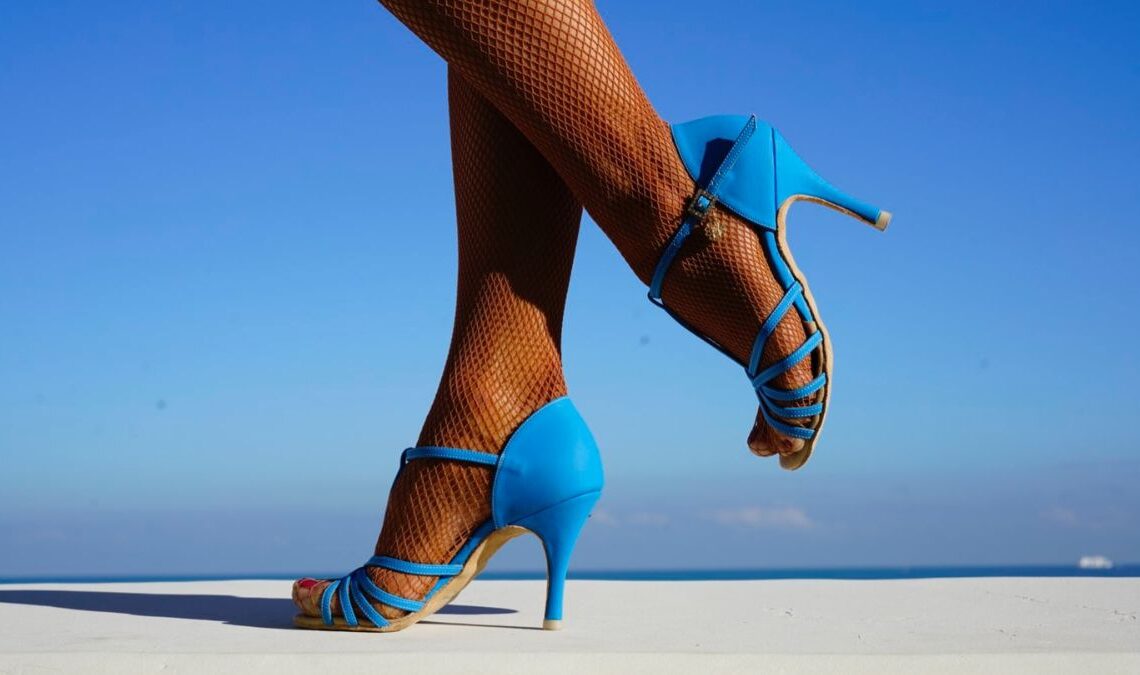When it comes to women’s shoes and dance shoes, it’s essential to choose the right shoe. Sizing is an important factor for consumers to be aware of. There are different shoe sizes for men and women, so it’s essential to try them on before you buy.
Are dance shoes the right size?
The size of dance shoes can vary according to three main factors.
- Dance shoe manufacturer
- Brand
- Style
It’s essential to note that the term “actual size” assumes that the manufacturer’s size is exact and consistent. Size can vary from one brand to another and even from one shoe model to another within the same brand. Therefore, the notion of “real size” can vary depending on the article and the manufacturer. To be sure you’re getting the right size, it’s often advisable to consult the manufacturer’s sizing guidelines.
We recommend that you do the following before buying your new pair of women’s ballroom dance shoes:
Make sure of the brand you buy – different brands have different sizes.
For dance shoes:
- Werner Kern, Nueva Epoca, and Anna Kern tend to cut large. You’ll generally need to take a half-size smaller than your usual size.
- Supadance dance shoes are designed for competition, so they fit relatively small and tight. If you like a snug fit, choose your usual size (a UK5 for a size 38). If you don’t want your shoes to be too tight, we advise you to choose half a size larger (UK5.5).
- Dance sneaker brands Rumpf and PortDance cut correctly: your usual size will fit perfectly.
- Likewise, Rosso Latino fits true to size. However, some models can be narrow. In this case, this will be indicated on the product sheet.
Make sure you’re getting a shoe that offers the proper foot support.
Generally speaking, the foot must be well-supported when choosing a dance shoe. Under no circumstances should your foot be allowed to wander around in the shoe, as this would entail the risk of twisting your ankle!
To avoid incidents, you need a well-fitting dance shoe, even a little tight, as the shoe will loosen slightly with use. So, when hesitating between two sizes, always choose the smaller one. This way, your foot will be well-supported in the dance shoe.
Are there differences between UK and US sizes?
Regarding dance shoes, English (UK) sizes are usually used as a reference. Equivalents generally vary from one supplier to another.
To find out how UK sizes correspond to European sizes, always refer to the dance shoe size charts in the boutique or online store of your choice. This information is also available via our interactive size guide, which is displayed when you select your shoe size.
Exceptional rules for ballet pointe shoes
In the same way as for ballroom dance, ballet pointe shoes are generally expressed in UK sizes. Below is a table of correspondence by supplier between these sizes and standard European sizes.
Remember, however, that buying pointe shoes is a complex purchase, with issues of sole hardness and width often requiring a fitting. Trying the shoes before buying them is always a good idea unless you already know your size and are comfortable with a specific brand you’ve been using for years.
Make sure that the shoe fits snugly.
Dance shoes must fit snugly so that there’s no play between your foot and the shoe and your ankle is well supported. That’s why you need to refer to the size you usually wear for your street shoes. If you usually wear a size 38, for example, order your shoe in 38. To ensure they fit snugly to your feet, don’t wear thick socks like you would for winter boots.
If you usually wear a 38.5, choose a 38.5 if the dance shoes you’ve chosen come in a half-size. Otherwise, don’t hesitate to order a half-size smaller than your usual size, i.e., 38.
Make sure the heels are the right height.
The recommended heel height for dancers starting should be 4 centimeters to 5 centimeters. This heel height is very stable and will enable you to raise your height without feeling like you’re wearing heels. These are the kinds of shoes that you’d often wear during classes as well.
The classic heel of any dance is generally around 5.5 centimeters, 6.5 centimeters, 7.5 centimeters, or 8.5 centimeters. This height can be worn both in class and in actual shows. This heel usually has a broader base and is often hollowed out around the perimeter and flared at the bottom. It provides excellent stability and is used by the vast majority of dancers. It perfectly suits beginners and professional dancers, providing strength and comfort.
Latin dance shoes usually have a higher stiletto heel. These shoes are thin from the base to the sole, feature an elegant heel, and are generally used by professional dancers for performances, competitions, and shows.
Material matters
Depending on the brand, there may be little difference between Latin and ballroom shoe styles. Their sizes are measured similarly, and the sizing chart is identical.
However, it’s important to note that some dance shoes are tighter than others.
Dance shoes made of leather or rigid material around the toes are tighter than suede or satin dance shoes. Suede and nappa leathers offer more flexibility and softness, as do top-quality brocade and satin. The higher the quality of the leather, the more comfort it will bring to the dancer, and the dancer’s foot will be able to adapt gradually to the shape of the shoe.
How do I measure my foot to find the right size?
Measure the length of your foot in centimeters (or inches) and refer to the manufacturer’s size chart according to dance style and type of shoe. You’d find that some websites have inches, whereas some websites showcase centimeters. To see the conversion between inches and centimeters, use the following ratio (or conversion number), which is 1 inch equal to 2.54 centimeters.




